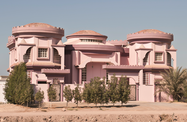During the first three quarters of 2011, the Ras Al Khaimah (RAK) construction industry has pressed on with scheduled mixed-use development projects.
With fiscal uncertainty persisting in North America and Europe, and political unrest still lingering in the region, construction sectors across the Middle East and North Africa (MENA) region have faced mixed economic signals. Despite these external factors, however, specific regional circumstances – such as rising populations and increased demand in some segments – are still helping to boost the industry.
During the first three quarters of 2011, several major mixed-use developments projects have been handed over in RAK. A number of these are products of RAK Properties, a government-backed real estate company charged with enhancing development in the emirate. The firm handed over three major projects in the first 11 months of 2011: Julfar Towers, Mina Al Arab and RAK Tower.
The first two are located in RAK itself. Handover for the two 45-storey Julfar Towers began last summer. The project, which is completely within the RAK Free Trade Zone, consists of one tower with 468 offices and another with 349 residences.
The company also started handing over units in another mixed-use development called Mina Al Arab. Unlike Julfar, however, this 3.25m-sq-metre residential community is predominantly low-rise and located on the coast. The Dh10bn ($2.72bn) project is set to include recreational facilities for residents, retail areas and six residential districts, as well as ecological preserves for wetlands and beaches.
A third project, the RAK Tower, was also finished last summer. The building, located on Abu Dhabi’s Reem Island, includes 212 residences. Handover of units began on June 27, the company said.
The initial sales and handovers of these mixed-use areas have offered a significant boost to RAK Properties’ revenues. In its Abu Dhabi Securities Exchange (ADX) Directors Report for the first nine months of this year, the company reported sales revenues of Dh267m ($72.67m), compared to Dh115m ($31.3m) for the same period in 2010.
Despite rising revenues, however, the company reported in the ADX report that profit for the first nine months has slipped from Dh164m ($44.64m) to Dh99m ($26.95m), citing climbing impairment costs and expenses. Impairments arise when the value of properties not yet sold decreases, meaning that they will fetch less on the market than planned.
But RAK is not alone in this: elsewhere in the region developers have also reported larger revenues but decreasing net profits, thanks to a combination of tighter credit and more properties coming online. For the third quarter of 2011, Union Properties, a developer in neighboring Dubai, reported a Dh1bn ($272.19m) loss alongside revenues that increased by 75%, from Dh545m ($148.34m) to Dh955m ($259.94), the local daily The National reported.
To ensure financing options for buyers, some developers are finding ways to partner with banks. Last November RAK Properties announced a memorandum of understanding (MoU) with Sharjah-based United Arab Bank (UAB). “Our predominant focus through this MoU is to offer attractive mortgage solutions to UAE nationals and expatriates who are customers of RAK Properties,” said Paul Trowbridge, UAB’s CEO. Indeed, the mortgage tie-up could do much to buoy sales numbers by providing financing options to mid-range buyers who might otherwise delay committing to a purchase.
Although the swift arrival of these new projects might lead to brief periods of oversupply, the combination of growing industrial and tourism sectors should be able to attract visitors in the long term, sustaining demand even in the face of uncertain global economic conditions.

